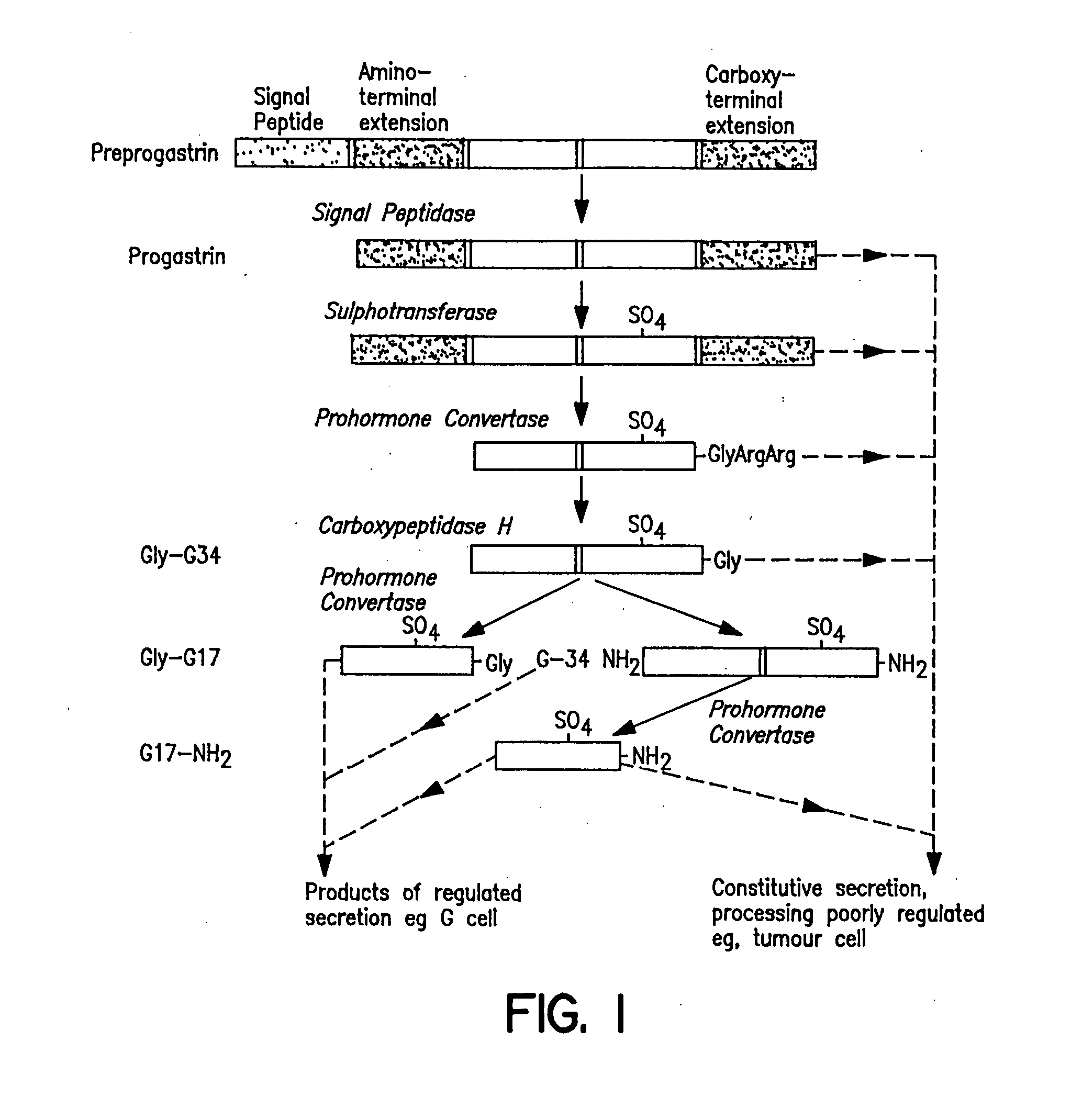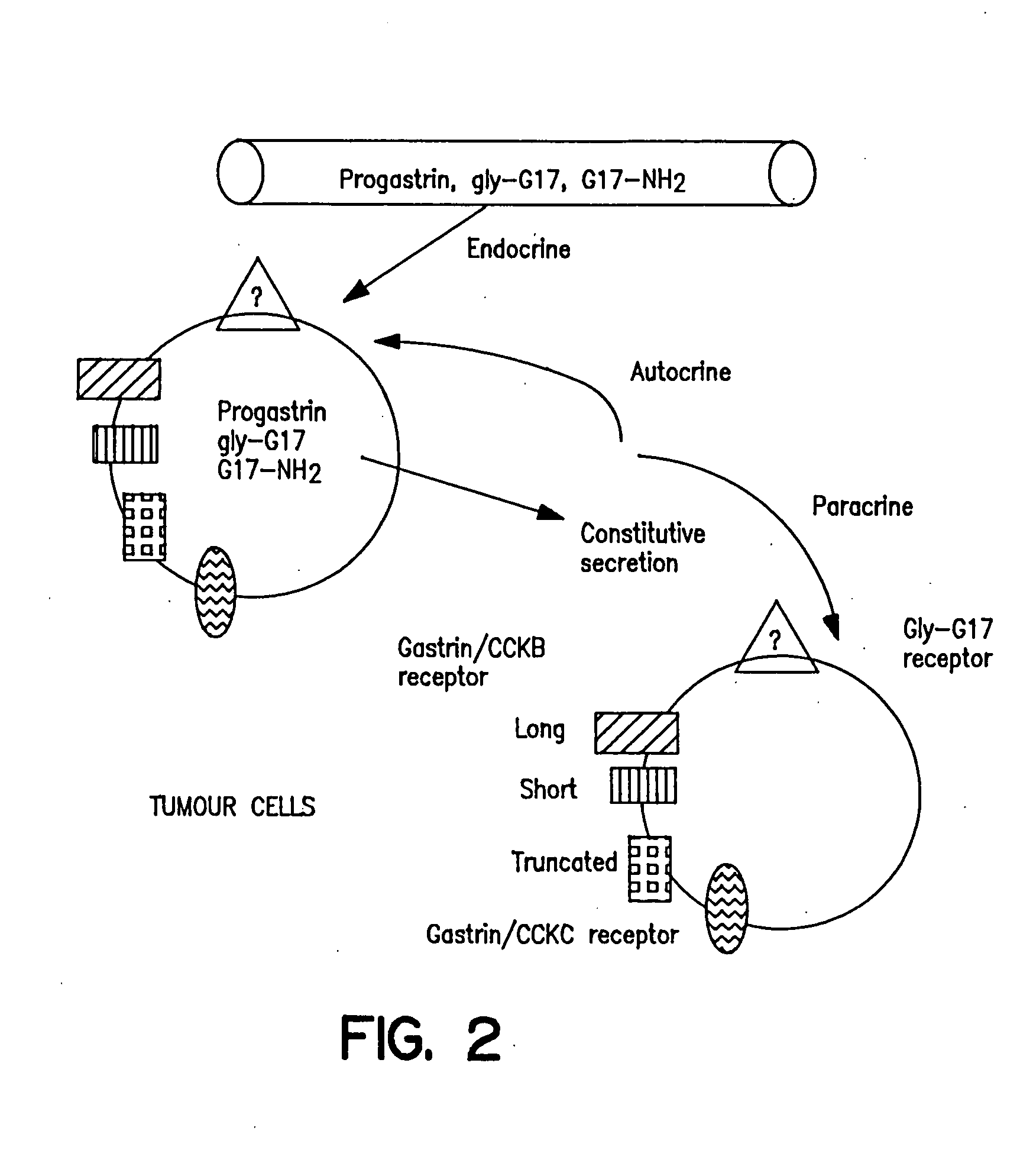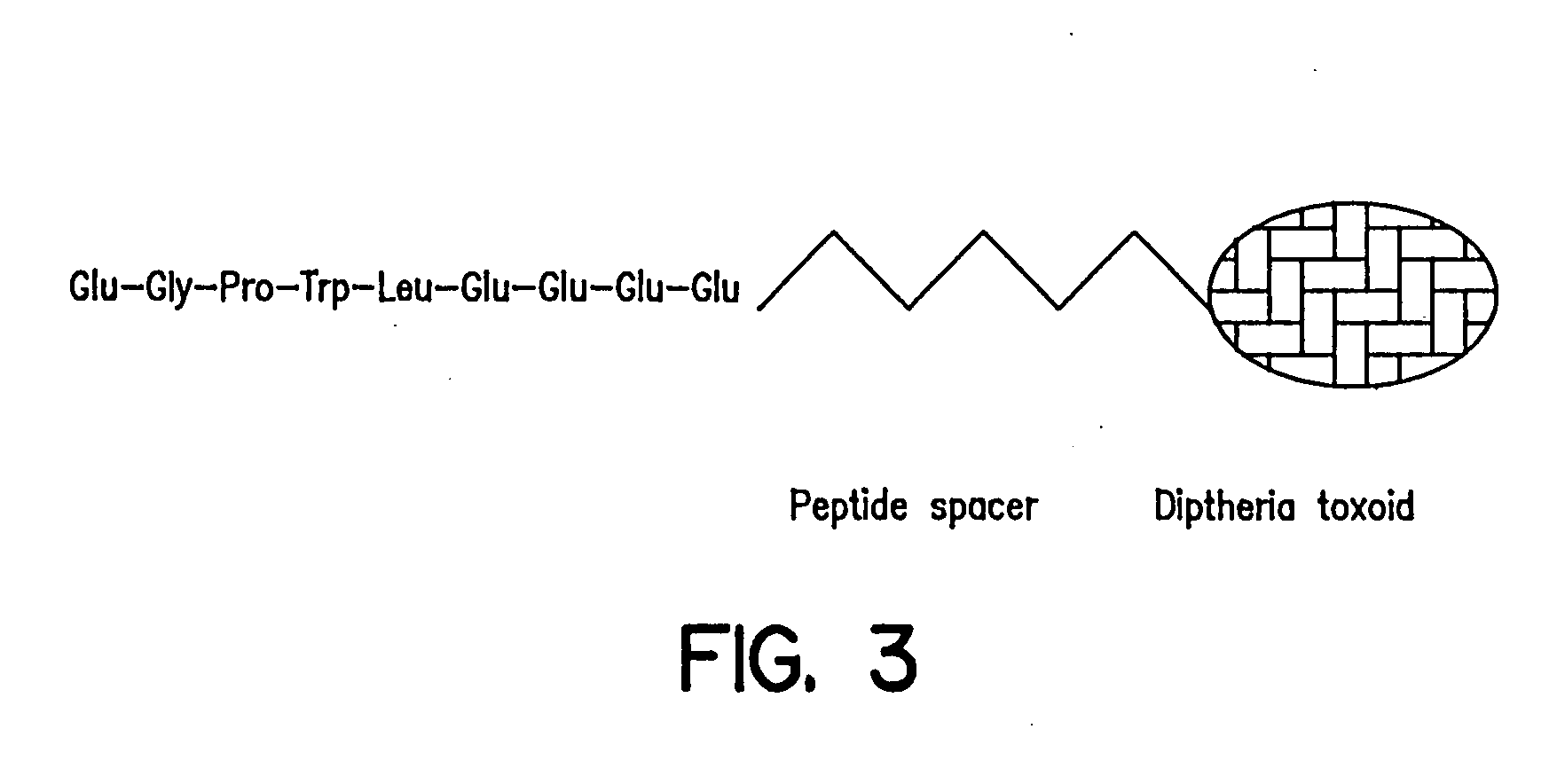Prevention and treatment of hypergastrinemia
a hypergastrinemia and hypergastrinemia technology, applied in the direction of gastrin/cholecystokinin, immunological disorders, drug compositions, etc., can solve the problems of linear and simple hyperplasia, affecting tumor incidence, and increasing the chance of spontaneous mutation
- Summary
- Abstract
- Description
- Claims
- Application Information
AI Technical Summary
Benefits of technology
Problems solved by technology
Method used
Image
Examples
example 1
[0062] Gastrin neutralization was achieved by using an immunogen, i.e. the gastrin immunogen preparation, which is composed of the amino terminal domain of gastrin-17 linked, via an amino acid spacer, to diphtheria toxoid which acts as the immunogenic carrier. The antibodies raised by virtue of the design of the immunogen, cross-react with both amidated and glycine-extended gastrin-17, known proliferative forms of gastrin. Min mice were immunized s.c. with the hG17-DT immunogen (100 mg / mouse) at week 4, with subsequent injections at 3 weekly intervals. Serum antibody titres are known to rise within 2 weeks of the first immunization at levels with an antigen binding capacity of >10−9M. The hG17-DT immunogen was administered to mice at 4 weeks of age to examine its effect on mice with an established tumor burden. Control mice received immunogen constituents without the active peptide.
[0063] The presence of anti-gastrin antibodies within the serum of gastrin immunogen-immunized mice w...
example 2
[0074] As described below, the effect of omeprazole induced hypergastrinemia on the progression of the intestinal neoplasia was further studied in the Min (multiple intestinal neoplasia) mouse model of polyposis coli.
Confirmed Min+ genotype mice were randomized into 4 groups:
[0075] Group 1. OME 75 mg / kg daily oral treatment [0076] Group 2. OME+GSI 100 mg oral dose / mouse day 0 and every 3 weeks [0077] Group 3. Oral vehicle+control immunogen [0078] Group 4. Oral vehicle−control immunogen
[0079] Serum gastrin level was measured by RIA. Prior to end of treatment, proliferative index was determined by the bromodeoxyuridine method. [0080] Group 1. 236 pg / ml of serum gastrin [0081] Group 4. 67 pg / ml of serum gastrin
[0082] Group 1 hypergastrinemia significantly decreased survival compared to control (p=0.0001, log rank test) with mice in control group having a 50% survival of 16 weeks compared to 8 weeks in the omeprazole treated group. HG17-DT immunogen induced formation of serum antib...
example 3
[0095] Immunogens capable of inducing specific immune responses to either G17 or to G34 were prepared by standard solid state synthesis methods. Each peptide was characterized as to amino acid content and purity.
[0096] Peptides with the following amino acid sequences were synthesized: [0097] Peptide 1—Human G17(1-6) (“hG17(6)”): pGlu-Gly-Pro-Trp-Leu-Glu-Arg-Pro-Pro-Pro-Pro-Cys [SEQ ID NO: 5][0098] Peptide 2—Human G17(1-5) (“hG17(5)”): pGlu-Gly-Pro-Trp-Leu-Arg-Pro-Pro-Pro-Pro-Cys [SEQ ID NO: 6][0099] Peptide 3—Human G17(1-4) (“hG17(4)”): pGlu-Gly-Pro-Trp-Arg-Pro-Pro-Pro-Pro-Cys [SEQ ID NO: 7][0100] Peptide 4—Rat G17(1-6) (“rG17(6)”): pGlu-Arg-Pro-Pro-Leu-Glu-Arg-Pro-Pro-Pro-Pro-Cys [SEQ ID NO: 8][0101] Peptide 5—Human G34(1-6) (“hG34(6)”): pGlu-Leu-Gly-Pro-Gln-Gly-Arg-Pro-Pro-Pro-Pro-Cys [SEQ ID NO: 2][0102] Peptide 6—Human G34(13-22) (“hG34 / G17 combination”): Asp-Pro-Ser-Lys-Lys-Gln-Gly-Pro-Trp-Leu-Pro-Pro-Pro-Pro-Cys [SEQ ID NO: 9]
[0103] Each of these peptides were conjugated to a...
PUM
| Property | Measurement | Unit |
|---|---|---|
| volume density | aaaaa | aaaaa |
| time | aaaaa | aaaaa |
| time | aaaaa | aaaaa |
Abstract
Description
Claims
Application Information
 Login to View More
Login to View More - R&D
- Intellectual Property
- Life Sciences
- Materials
- Tech Scout
- Unparalleled Data Quality
- Higher Quality Content
- 60% Fewer Hallucinations
Browse by: Latest US Patents, China's latest patents, Technical Efficacy Thesaurus, Application Domain, Technology Topic, Popular Technical Reports.
© 2025 PatSnap. All rights reserved.Legal|Privacy policy|Modern Slavery Act Transparency Statement|Sitemap|About US| Contact US: help@patsnap.com



